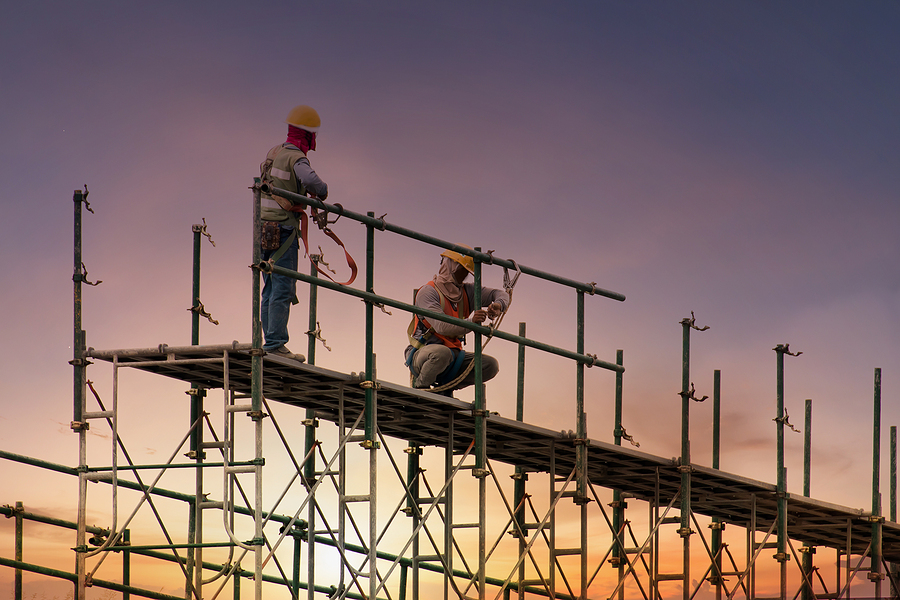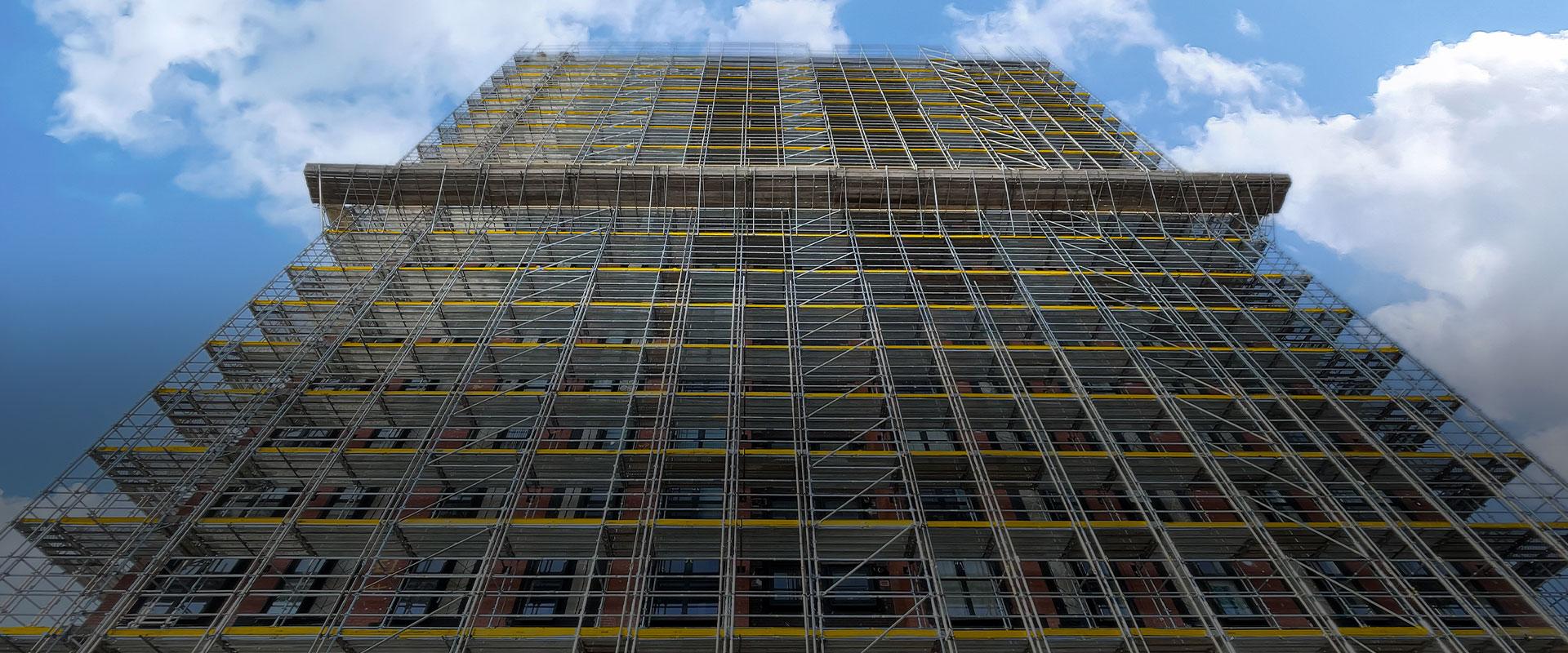Residential Scaffolding Solutions for Safe and Efficient Home Improvements
Residential Scaffolding Solutions for Safe and Efficient Home Improvements
Blog Article
Exploring the Various Types of Scaffolding Used in Building Jobs
The construction industry relies heavily on numerous types of scaffolding to meet specific task requirements, each offering distinctive benefits and applications. Standard frame scaffolding supplies a sturdy structure for basic jobs, while suspended scaffolding is vital for work on skyscraper frameworks.

Conventional Framework Scaffolding
Standard structure scaffolding is one of one of the most extensively made use of approaches in the construction market because of its toughness and flexibility. This system contains upright and horizontal structures that are constructed to produce a secure system for workers and materials. The main parts include vertical messages, horizontal ledgers, and angled dental braces, which with each other give a strong framework that can sustain considerable loads.
One of the key benefits of typical frame scaffolding is its adaptability to different construction projects, varying from domestic structures to huge industrial frameworks. The modular design permits for very easy setting up and disassembly, making it efficient for both long-term and temporary jobs. In addition, the system can be personalized in elevation and size, accommodating different structure designs and website conditions.
Security is extremely important in scaffolding applications, and standard framework systems are outfitted with guardrails and toe boards to avoid drops and make sure worker defense. In addition, normal inspections and adherence to safety and security regulations are vital in keeping the stability of the scaffold. In general, standard frame scaffolding remains a basic choice in the construction sector, giving a dependable system for labor and boosting overall project efficiency

Suspended Scaffolding
Put on hold scaffolding offers an unique remedy for building and construction tasks that call for accessibility to elevated surface areas, particularly in situations where typical framework scaffolding may be impractical. This kind of scaffolding is normally put on hold from the roofing system or upper levels of a framework, using a system of ropes, sheaves, and platforms to create a functioning space that can be adapted to different heights.
Among the primary advantages of put on hold scaffolding is its adaptability. It can be quickly repositioned or decreased to suit modifications in building and construction needs, making it optimal for tasks such as home window installation, façade work, and upkeep on skyscrapers. Additionally, the marginal footprint of put on hold scaffolding allows for much better usage of ground area in city environments, where room is typically restricted.
Safety is an important factor to consider in the use of suspended scaffolding. In general, suspended scaffolding gives a efficient and effective service for accessing hard-to-reach areas in various building scenarios, improving both efficiency and safety and security on website.
System Scaffolding
System scaffolding, usually considered a modern-day remedy in the scaffolding sector, includes pre-engineered elements that can be promptly constructed and adjusted for different building and construction projects. Scaffolding. This sort of scaffolding is identified by its modular style, which enables for adaptability and effectiveness on task sites, suiting different elevations and architectural demands
Commonly made from high-strength steel or light weight aluminum, system scaffolding uses improved sturdiness and stability. The components include upright blog posts, straight journals, and angled dental braces, which interconnect securely, guaranteeing a durable structure. The style usually incorporates standardized installations, streamlining setting up and disassembly procedures, thereby reducing labor time and expenses.

Rolling Scaffolding
Moving scaffolding is a functional choice to typical fixed scaffolding, made for mobility and ease of use on building websites. This sort of scaffolding contains a system sustained by frameworks with wheels, permitting employees to conveniently relocate it as required. The movement attribute dramatically boosts performance, as it decreases downtime linked with putting together and taking apart fixed scaffolding.
Generally constructed from lightweight products such as light weight aluminum or steel, rolling scaffolding provides a durable yet portable solution for tasks needing constant repositioning - Scaffolding. It is particularly helpful in tasks such as painting, drywall installation, and electrical job, where access to various elevations and places is needed
Safety is paramount in rolling scaffolding layout, with features such as locking wheels to avoid unplanned motion when being used, and guardrails to shield workers from falls. Furthermore, many versions are adjustable in elevation, fitting different job needs.
Cantilever Scaffolding

The layout of cantilever scaffolding commonly includes utilizing braces or arms secured to a building or framework, allowing the system to extend outside safely. Safety and security is extremely important; thus, these scaffolds must be engineered to stand up to action scaffold services numerous loads and ecological conditions. Normal assessment and maintenance are necessary to guarantee structural honesty and worker safety.
Cantilever scaffolding is favored for its adaptability and efficient use area, making it a preferred selection in urban atmospheres where room restrictions prevail. In addition, it facilitates less complicated access to high elevations, ultimately adding to the total effectiveness of construction tasks. As with all scaffolding kinds, correct training and adherence to security criteria are critical for workers making use of cantilever scaffolding.
Conclusion
Standard frame scaffolding gives stability, while put on hold scaffolding supplies flexibility for raised jobs. System click here for more scaffolding facilitates quick setting up, and rolling scaffolding improves wheelchair for differing job settings.
Traditional frame scaffolding supplies a strong foundation for general jobs, while suspended scaffolding is crucial for job on skyscraper structures.Rolling scaffolding is a our website flexible alternative to typical set scaffolding, made for flexibility and simplicity of usage on construction sites. As with all scaffolding types, proper training and adherence to security criteria are important for workers utilizing cantilever scaffolding.
Typical structure scaffolding supplies stability, while put on hold scaffolding provides flexibility for raised tasks. System scaffolding helps with fast setting up, and rolling scaffolding improves flexibility for varying work environments.
Report this page